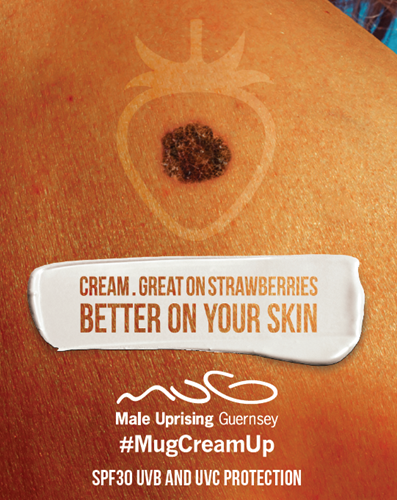Skin cancer is very common in Guernsey. Finding skin cancer early saves lives, so it's very important to know the signs.
Skin cancer often first appears as a change in a mole or a patch of normal skin. If you notice a change that happens over weeks or months you should call your doctor without delay. Most changes are not caused by cancer, but do need to be checked out by a doctor.
In this leaflet you can find out about skin cancer and signs to look out for.
There are two main types
Non-melanoma skin cancer, which is very common,
and malignant melanoma which is less common
but
more serious. Some people also use 'melanoma' to
mean malignant melanoma.
What causes skin cancer?
The main cause of skin cancer is too much ultra violet radiation (UVR), from the sun or sunbeds.
Who is most at risk?
Everyone should check their skin for changes but some people are more likely than others to develop skin cancer. People with fair skin, lots of moles or freckles, or a family history of skin cancer are most at risk.
Skin cancer is the second most common cancer in young people (age 15-34). But the risk of developing the disease still increases with age.
What are the signs of skin cancer?
You may have some moles or dark patches on your skin that are flat or slightly raised. Usually these will remain harmless all your life. Show your doctor any moles or patches of normal skin that change in size, shape or colour over weeks or months.
Check your skin regularly for changes. This is especially important if you are fair skinned with lots of moles or freckles. The ABCD rule can help you remember what to look out for. If you notice any of the ABCD signs, see your doctor without delay.
Skin Cancer
The ABCD Rule
Asymmetry
The two halves of a melanoma may not look the same
Border
Edges of a melanoma may be irregular, blurred
Colour
The colour of a melanoma may be uneven, with more than one shade.
Diameter
Many melanomas are at least 6mm in diameter, the size of a pencil eraser.
Other signs of skin cancer
- a patch of skin that is red, itching or inflamed
- a spot, mole or sore that itches or hurts
- a mole or growth that bleeds, crusts or scabs
Any change in a mole, freckle or normal patch of skin that occurs quickly, over weeks or months, is worth getting checked out.
Where can skin cancer start?
The most common sites for melanoma are the leg in women, the back in men and the face in older people.
But a melanoma can grow anywhere, sometimes on the sole of your foot, or on your bottom.
Other types of skin cancer often affect areas that catch shoulders or arms.
Does skin cancer spread?
Melanoma and some other skin cancers will
spread to other parts of the body if left untreated.
Some skin cancers spread more quickly than others.
It is essential to see your doctor as soon as you notice
any changes.
What will happen at the doctor's?
If your doctor has any concerns you will be referred to a hospital specialist. If your specialist thinks
you might have skin cancer it will be removed in a simple operation under local anaesthetic. The skin
will then be examined. If it is skin cancer you may be given treatment and invited to attend regular check-ups.
PREVENTION CAN LITERALLY SAVE YOUR SKIN
Keeping out of the sun between 11am and 3pm, clothing, sunglasses, hats and suncream with a
minimum SPF of 15 are the best methods to protect your skin from cancer.
#MUGcreamup

